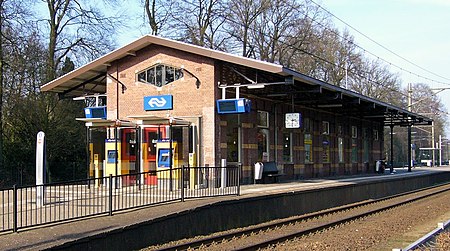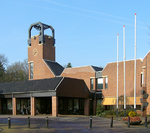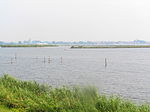Ermelo railway station
1863 establishments in the NetherlandsBuildings and structures in Ermelo, NetherlandsDutch railway station stubsRailway stations in GelderlandRailway stations on the Centraalspoorweg ... and 1 more
Railway stations opened in 1863

Ermelo is a railway station located in Ermelo, Netherlands. The station was opened on 1 June 1882 (an official report from the then operating company NCS also mentions 1-6-1882 as the official opening date) and is located on the Amersfoort–Zwolle section of the Utrecht–Kampen railway (Centraalspoorweg). The station is operated by Nederlandse Spoorwegen. It was previously called Ermelo- Veldwijk (1863-1952).
Excerpt from the Wikipedia article Ermelo railway station (License: CC BY-SA 3.0, Authors, Images).Ermelo railway station
Hooge Riet, Ermelo
Geographical coordinates (GPS) Address Nearby Places Show on map
Geographical coordinates (GPS)
| Latitude | Longitude |
|---|---|
| N 52.301111111111 ° | E 5.6144444444444 ° |
Address
1
Hooge Riet
3851 JC Ermelo
Gelderland, Netherlands
Open on Google Maps








